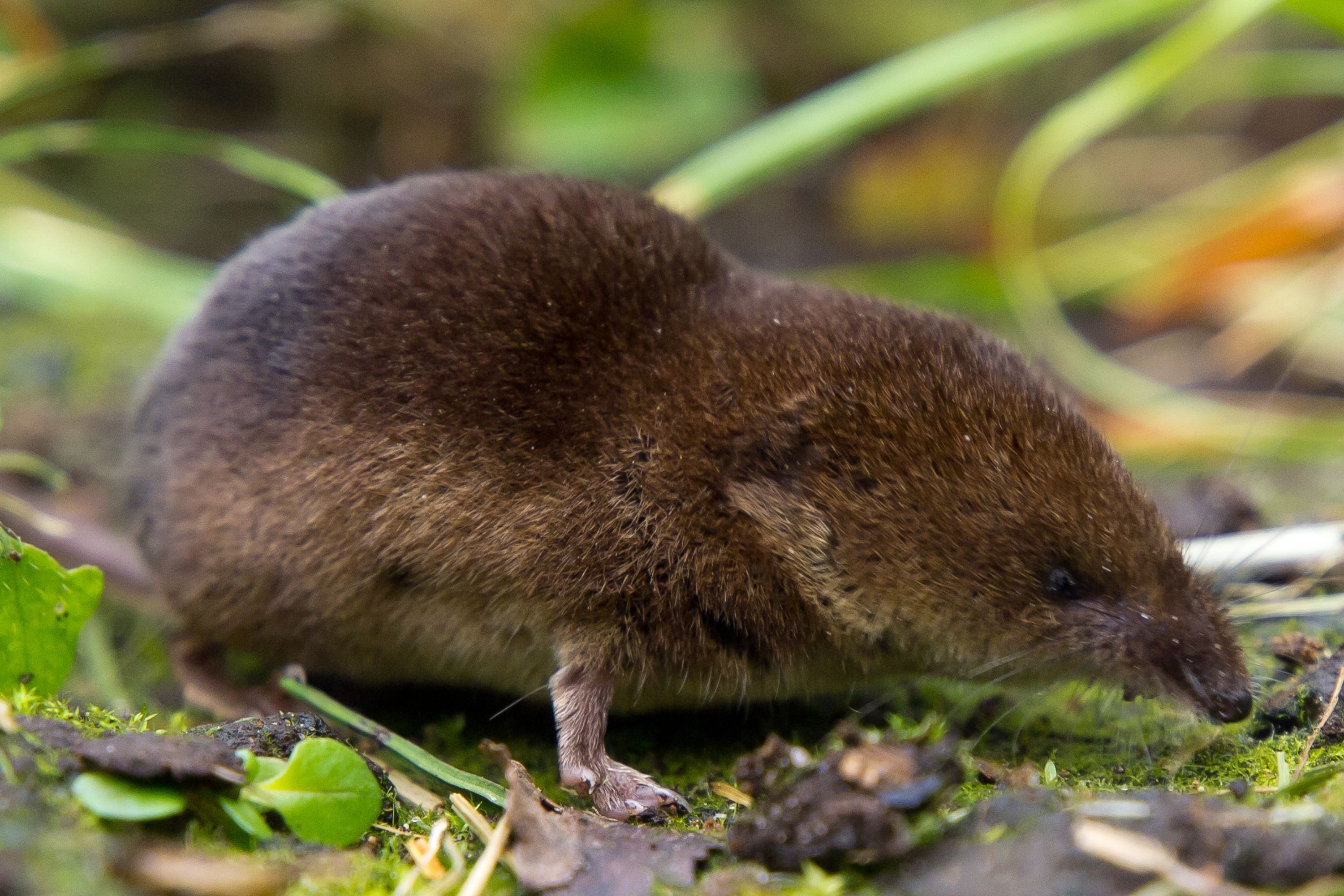American pygmy shrew
(Sorex hoyi)

Description
The American pygmy shrew (Sorex hoyi) is a small shrew found in Northern Alaska, Canada, and the northern United States, south through the Appalachian Mountains. It was first discovered in 1831 by naturalist William Cane in Georgian Bay, Parry Sound. This animal is found in northern coniferous and deciduous forests of North America. It is believed to be the second-smallest mammal in the world, but has an extremely large appetite for its size. Due to its fast metabolism, it needs to eat constantly. It digs through moist soils and decaying leaf litter for food. The American pygmy shrew is the smallest mammal native to North America and is one of the smallest mammals in the world, being just slightly larger than the Etruscan shrew of Eurasia. Its body is about 5 cm (2 in) long including a 2-cm-long tail, and it weighs about 2.0 to 4.5 g (0.07 to 0.16 oz). Its fur is generally a reddish or grayish brown during the summer, and a white-gray color during the winter. The underside is generally a lighter gray. This animal molts about twice a year, once during late summer, and again during the spring. It has a narrow head with a pointed nose, and whiskers. The eyes are small and well hidden. The primary senses used for hunting are hearing and smell. Sorex hoyi was originally placed in the genus Microsorex, which was a subgenus under Sorex until more research had been done. The American pygmy shrew is in the order Soricomorpha and the family Soricidae. Its two closest relatives are the smokey shrew (S. fumes) and the large-toothed shrew (S. macrodon). This genus is believed to have appeared in the late Miocene. Pygmy shrews are distributed throughout the boreal areas of North America. This ranges from Northern Alaska, to the Rocky Mountains, through the Great Lakes region, to the Appalachians, to the eastern side of Canada. Although S. hoyi prefers moist habitats, it has been recorded to live in areas with both wet and dry soil, but if it is living in a more arid environment, it needs to have a source of water nearby. Primarily insectivorous, this animal forages in moist soil and dead leaves to find its prey. Because of the pygmy shrew's small size, its diet primarily consists of insects and insect larvae, while the larger shrews eat insects and worms. Its diet is almost exclusively protein-based.
Taxonomic tree:







